Ass Tool_SITHCCC028 Prepare appetisers and salads
.doc
keyboard_arrow_up
School
Achieve Early College High School-- McAllen *
*We aren’t endorsed by this school
Course
12
Subject
Business
Date
May 16, 2024
Type
doc
Pages
33
Uploaded by AmbassadorElephant3586 on coursehero.com
SITHCCC028 – Prepare appetisers and
salads
Assessment Tool
Mode | Classroom Delivery
Assignment Cover Sheet
Student ID
Student Name
Unit
SITHCCC028– Prepare appetisers and salads Assessment Task - Title/Number
Trainer/Assessor
Date Submitted
Note
: Plagiarism/Cheating is a serious offence. If a student is found plagiarising/cheating, it may result in a penalty of suspension/cancellation of student’s enrolment. In submitting their work, students must be aware of college’s Plagiarism and Academic Misconduct Policy available in student handbook, college’s website and student administration
.
Declaration of Originality:
By submitting this assignment for assessment, I acknowledge and agree that:
This assessment task/work is submitted in accordance with the college’s Plagiarism and Academic Misconduct Policy
. I also understand the serious nature of academic dishonesty (such as plagiarism) and the penalties attached to being found guilty of committing such offence
No part of this assessment task/work has been copied from any other source without acknowledgement of the source
No part of this assessment task/work has been written by any other person, except to the extent of team and/or group work as defined in the unit/assessment task
A copy of the original assessment task/work is retained by me and that I may be required to submit the original assignment to the trainer/assessor upon request
The trainer/assessor may, for the purpose of assessing this assessment task/work:
o
Provide a copy of this assignment to another member of the faculty for review and feedback; and/or
o
Submit a copy of this assignment to a plagiarism checking service. I acknowledge that a plagiarism checking service provider may then retain a copy of this assessment task/work on its database for the purpose of future plagiarism checking
Late submission: Late submission without a prior approval of the trainer/assessor will not be accepted and may delay the assessment outcome. You may also need to resubmit work as per college’s Reassessment Policy
.
I declare that this assessment is my own work. Student signature:
Date:
------------------------------------------------------------------------------------------------------------------------------------------------------------------------------------------------------------------------------------------------------------------------------------------------------
Admin Use Only
Received | Date Stamp
Comments (if any)
SITHCCC028 – Prepare appetisers and salads
Assessment tool | V 1.1 |Nov 2022 I Review: Oct 2023
Australian English Colleges t/a Australian College of Hospitality and Business Management
Provider Code: 45215 | CRICOS Provider Code 03630A Page 2
of 33
Assessment Summary
Read all the instructions below before attempting the assessment task. Assessment tasks are tools used to determine if you have the knowledge and skills to complete tasks to industry standards within the workplace. Your trainer/assessor will help you throughout this task and it is your responsibility to provide enough evidence to justify a competent decision by the trainer/assessor. If you do not understand the questions or what is required, ask your trainer/assessor for assistance. For group assessments, all students are to contribute
to the assessment tasks. You can work in groups up to a maximum of four people.
You are to complete all tasks by the due date and assessments must have a coversheet attached. If you think
you do not have enough time to complete the tasks by the due date, discuss with the trainer/assessor the
reasons of why you cannot submit on time. Writing your responses
When answering questions, ensure that your answers are detailed enough to so the assessor can draw a
conclusion that you have the knowledge and/or skills to demonstrate competency. Handwritten answers must
be written in blue or black pen. When producing reports, ensure that your project has a title page, table of
contents, page numbers, reference list, ensuring that your answers thoroughly match the questions asked. Answer all questions in your own words to avoid plagiarism. Plagiarism is copying someone else’s work or
ideas and saying that it your own work. Sources of work must be properly referenced, outlining the source of
your ideas. Penalties may include having to resubmit the assessment task again, repeating the Unit of
competency, or for repeat plagiarism, expulsion from Australian College of Hospitality & Business
Management. Marking of Assessments
On submission of your assessment will be marked for a result of either Satisfactory (S) or Not Yet Satisfactory
(NYS). If you receive a NYS result, you will be asked to redo the tasks again. To achieve a competent result with
this unit, all tasks need to be completed and marked as satisfactory. Your trainer/assessor will provide
feedback to you on each task, outlining where you must improve to achieve a Satisfactory (S) result. When all
tasks are marked as Satisfactory (S), you will receive a result of Competent (C) for this unit otherwise, you will
be marked Not Yet Competent (NYC). Assessments submitted to the trainer/assessor after the due date may
not be accepted, and you may have to pay a resubmission fee / adjustment may apply. Students with Special Needs
If leaners/learners have any special needs (e.g. physical disability, learning difficulty) regarding assessment, they should be directed to discuss these with the Course Coordinator. The college will endeavour to make all possible and reasonable adjustments to any aspect of assessment in order to address those needs. Some examples of additional support could include:
Language, literacy and numeracy (LLN)
Assistive technology
Additional materials or tutorials
Assistance in using technology for online delivery components.
Reasonable adjustment
Reasonable adjustment refers to any modification made to the learning environment, certification requirements, training delivery or assessment method to help learners with a disability access and participate in education and training on the same basis as those without disability (IBSA, 2015). The Disability Standards for Education 2005 were formed under the Disability Discrimination Act 1992. They clarify the obligations of training providers to ensure that learners who have a disability are able to access and participate in education and training on the same basis as those without disability.
Some examples of reasonable adjustments could include:
SITHCCC028 – Prepare appetisers and salads
Assessment tool | V 1.1 |Nov 2022 I Review: Oct 2023
Australian English Colleges t/a Australian College of Hospitality and Business Management
Provider Code: 45215 | CRICOS Provider Code 03630A Page 3
of 33
Personal support services, e.g. a reader, Auslan interpreter, a scribe
assistive technology or special equipment, e.g. screen readers, magnifiers, alternative keyboards
modifying the presentation method, e.g. visual, oral, print, electronic
adjustments to timeframes, e.g. providing materials prior to class, extended time limits
adjustment of the physical environment, e.g. specific furniture, arrangement of classroom.
The determination of “reasonableness” requires judgement that must take into account the impact on the RTO
and the need to maintain the integrity of the qualification. While reasonable adjustments can be made to the ways in which evidence of performance is gathered and demonstrated, the criteria for making Competent/Not Yet Competent decisions (and/or awarding grades) should not be altered in any way. That is to say, the standards expected should be the same irrespective of the group and/or individual being assessed (Disability Standards for Education 2005).
Skill Recognition and Credit Transfer
Appropriate credit(s) may be granted to eligible students against each unit of competency on presentation of evidence of successful completion of the same unit in an equivalent or higher qualification. Under the Australian Qualifications Framework, this qualification recognises competencies achieved as part of a Nationally Recognised Qualification from other institutes or universities.
Students may also apply for Recognition of Prior Learning (RPL) by providing evidence that they have the required skills and knowledge in the specific areas of competency through work/industry experience and/or completed eligible assessments in equivalent or higher qualification. Please refer to college’s RPL/Credit Transfer Policy for more information and applicable procedures. The policy is available either through the faculty coordinator or college’s website
Academic Policies and Procedures
Applicable policies and procedure related to this course including plagiarism, assessments, appeals and complaints, can be found with the course coordinator as well as in the “Policies and Procedures” section of the
college’s website.
Submission of Work
All the written works must be submitted in a hard copy, and an additional soft/electronic copy if required by the trainer/assessor, with an accompanying “Assessment Cover Sheet”. Each Assessment Cover Sheet should be signed by the student and must contain student details and date of submission. Material submitted for assessment—Word processed assignments, reports, essays, projects, etc. must contain student’s name, ID (if available). Within the context of these assessment tasks, the assessor fulfils the role of client, manager or supervisor, as applicable. Work submitted for “approval” within this context must demonstrate care and attention to detail, such that the student inspires confidence that the work is being undertaken competently. Where soft copy/electronic files are submitted, students are encouraged to name the files according to established procedure. This would typically include a course or unit code, assessment or submission code, and in the case of multiple files an alphanumeric identifier. Multiple files may also be required to be submitted within an enclosing folder (with similar, appropriate naming conventions) or archive format—e.g. zip. Follow submission guidelines in each assessment task for specific instructions.
SITHCCC028 – Prepare appetisers and salads
Assessment tool | V 1.1 |Nov 2022 I Review: Oct 2023
Australian English Colleges t/a Australian College of Hospitality and Business Management
Provider Code: 45215 | CRICOS Provider Code 03630A Page 4
of 33
Unit Overview
This unit describes the performance outcomes, skills and knowledge required to prepare appetisers and salads following standard recipes. It requires the ability to select and prepare ingredients, and to use relevant equipment and cookery and food storage methods.
The unit applies to cooks working in hospitality and catering organisations. This could include restaurants, educational institutions, health establishments, defence forces, cafeterias, kiosks, cafes, residential caterers, in
flight and other transport caterers, and event and function caterers.
It applies to individuals who work with very little independence and under close supervision and guidance of more senior chefs. They follow predefined organisational procedures and report discrepancies to a higher-level
staff member for action.
The skills in this qualification must be applied in accordance with Commonwealth and State or Territory legislation, Australian standards and industry codes of practice.
Learning Outcomes
On successful completion of this unit, the learner/trainee will be able to;
Select ingredients.
Select, prepare and use equipment.
Portion and prepare ingredients.
Prepare appetisers and salads.
Present and store appetisers and salads.
As well as demonstrating the performance criteria, to be assessed as competent, the learner must demonstrate their ability to apply the required knowledge and skills in a range of situations. These are summarised in the Competency Standards section below.
Prerequisite Requirements
Unit Code Unit Title SITXFSA005
Use hygienic practices for food safety
Performance Criteria
The following performance criteria specify the required level of performance for each of the elements of competency:
Element
Performance Criteria
1. Select ingredients.
1.1. Confirm food production requirements from standard recipes.
1.2. Calculate ingredient amounts according to requirements.
1.3. Identify and select appetiser and salad ingredients from stores according to recipe, quality, freshness and stock rotation requirements.
1.4. Check perishable supplies for spoilage or contamination prior to preparation.
2. Select, prepare and use equipment
2.1. Select type and size of equipment suitable to requirements.
2.2. Safely assemble and ensure cleanliness of equipment before use.
2.3. Use equipment safely and hygienically according to manufacturer instructions.
3. Portion and prepare ingredients
3.1. Sort and assemble ingredients according to food production
SITHCCC028 – Prepare appetisers and salads
Assessment tool | V 1.1 |Nov 2022 I Review: Oct 2023
Australian English Colleges t/a Australian College of Hospitality and Business Management
Provider Code: 45215 | CRICOS Provider Code 03630A Page 5
of 33
sequencing.
3.2. Weigh and measure ingredients and create portions according to recipe.
3.3. Clean and cut salad ingredients using basic culinary cuts according to quality standards.
3.4. Minimise waste to maximise profitability of food items prepared
.
4. Prepare appetisers and salads
4.1. Select and use relevant cookery methods for salads and appetisers.
4.2. Prepare sauces and dressings according to recipe.
4.3. Follow standard recipes and make food quality adjustments within scope of responsibility.
5. Present and store appetisers and salads
5.1. Present prepared food items on appropriate service-ware.
5.2. Add dips, sauces and garnishes according to standard recipes.
5.3. Visually evaluate dish and
adjust presentation
.
5.4. Store dishes in appropriate environmental conditions.
5.5. Clean work area and dispose of or store surplus and re-
usable by-products according to organisational procedures, environmental considerations, and cost-reduction initiatives.
Performance Evidence
Evidence of the ability to complete tasks outlined in elements and performance criteria of this unit in the context of the job role, and:
follow standard recipes to prepare the following appetisers and salads:
appetisers:
antipasto
canapés
tapas
salads, including preparation of dressings as required by recipe:
tossed
compound
farinaceous
warm
fruit
complete mise en place activities and follow standard recipes when preparing above appetisers and salads that use of each of the following ingredients at least once (at least once across preparation of the eight appetisers and salads):
bread and bakery items
dairy products
dressing ingredients
dry goods
eggs
farinaceous products
frozen goods
fruit
herbs and spices
meat
poultry
seafood
SITHCCC028 – Prepare appetisers and salads
Assessment tool | V 1.1 |Nov 2022 I Review: Oct 2023
Australian English Colleges t/a Australian College of Hospitality and Business Management
Provider Code: 45215 | CRICOS Provider Code 03630A Page 6
of 33
Your preview ends here
Eager to read complete document? Join bartleby learn and gain access to the full version
- Access to all documents
- Unlimited textbook solutions
- 24/7 expert homework help
Related Questions
on 1- Question 111 of 120 120
Revieting A Questions arisan
A mortgage loan originator (MLO) who is also a real estate broker and refers a customer to a settlement
services provider owned by their real estate brokerage must identify this relationship to a borrower on which c
the following disclosures?
АО Initial loan estimate
B Special information booklet
CO Third-party service providers
DO Affiliated business arrangement
0:19:42
arrow_forward
Situation 2: The Acme Warehouse Company received a consignment of 20ft lengths of 3in diameter stainless steel pipes. Acme had never handled pipe as part of their warehousing operation. The forklift truck operator assigned to this job used the truck's forks as a ram to load, handle, and unload the pipe. Inspection of the pipe by the owners revealed that the forks were bending and damaging the pipe.
Question/s: Suggest several alternative methods for eliminating the problem of pipe damage. From a cost and ease in application standpoint, select one alternative solution for adoption.
arrow_forward
Instruction: Prepare a check sheet to analyze the data below from customer complaints, then prepare a list of recommendations that will address these complaints.
Case: Tip Top Markets
Tip Top Markets is a regional chain of supermarkets located in the southeastern United States. Karen Martin, manager of one of the stores, was disturbed by the large number of complaints from customers at her store, particularly on Tuesdays, so she obtained complaint records from the store’s customer service desk for the last nine Tuesdays.
June 1
out of orange yogurt
produce not fresh
bread stale
lemon yogurt past sell date
checkout lines too long
couldn’t find rice
overcharged
milk past sell date
double charged
stock clerk rude
meat smelled strange
cashier not friendly
charged for item not purchased
out of maple walnut ice cream
couldn’t find the sponges
something green in meat
meat tasted strange
didn’t like music
store too cold…
arrow_forward
Explain : Which of the following poses a challenge to hazard management? Question 17 options: a) cost cutting strategies b) worker reports of concerns c) employee retention d) preventive maintenance programs e) none of the above
arrow_forward
Question-1:
A company supplies several types of Ice-cream to consumer market. It has two plants. The data of year
2022 for both plants are given as follows
Plant-1
$10,000
$5,000
$2,000
50000
Quality rate
90%
Average Selling price $5/unit
Labor cost
Material cost
Energy cost
Unit produced
Plant-2
$7,000
$7,000
$3,000
40000
95%
$7/unit
For year-2023, company decided to make an additional investment of $3,000 which would potentially
improve the quality rate by 4% in plant-1 and 2% in plant-2. For budget limitation they can only invest in
any one of the plants. Management decided to invest where multifactor productivity improvement will
be higher compared to year-2022. Perform your analysis and suggest where management should invest
the amount. (You may use MS Excel to perform the calculation.)
arrow_forward
Sanjeevini is a 100 bed hospital established 10 years ago and is performing well. Now the hospital is facing trouble in sourcing inpatients due to various reasons, one of them being improper inpatient nursing care. So the hospital management plans to intervene to improve the inpatient Care Experience.
QUESTION: Develop a questionnaire to study the patient satisfaction in the hospita
arrow_forward
Instruction: Prepare a check sheet to analyze the data below from customer complaints, then prepare a list of recommendations that will address these complaints.
Case: Tip Top Markets
Tip Top Markets is a regional chain of supermarkets located in the southeastern United States. Karen Martin, manager of one of the stores, was disturbed by the large number of complaints from customers at her store, particularly on Tuesdays, so she obtained complaint records from the store’s customer service desk for the last nine Tuesdays.
arrow_forward
Volumetric Glassware: Utility and Calibration (Dry Lab)
Table B1: Calculation of a 100-mL Volumetric Flask.
temperature of the Distilled H2O (°C)
27
density of distilled H2O at calibration temperature
mass (g) of volumetric flask + distilled H₂O
Trial 1
198.5893
Trial 2
198.6114
Trial 3
mass (g) of dry volumetric flask
98.6563
98.7503
198.6001
98.7145
mass (g) of distilled H₂O
m true g
calculated volume of water dispensed, cm³
corrected volume, V20 °c, cm³
average corrected volume, V20 °C, cm³
standard deviation (4 sig figs)
%RSD (2 sig figs)
arrow_forward
QUESTION 5
The Taguchi method includes three major concepts. It includes all of the following, except
a.
Employee involvement
b.
Quality loss function
c.
Quality robustness
d.
Target oriented quality
arrow_forward
QUESTION 2
In an effort to reduce energy costs, a major university has installed more efficient lights as well as automatic sensors that turn the lights off when no movement is present in a room. Historically, the cost of lighting an average classroom for 1 week has been $265. To determine whether the changes have signficantly reduced costs, the university takes a sample of 50 classrooms. They find that the average cost for 1 week is $247 with a standard deviation of $60. When testing the hypothesis (at the 5% level of significance) that the average energy use has decreased from the past, what is the test statistic? (please round your answer to 2 decimal places)
arrow_forward
QUESTION 1: CASE STUDY ON AMAZON: ONLINE SALES
Amazon sells books, music, and many other items over the Internet and is one of the pioneers of online consumer sales. Amazon, based in Seattle, Washington, started by filling all orders using books purchased from a distributor in response to customer orders. As it grew, the company added warehouses, allowing it to react more quickly to customer orders. In 2009, Amazon had about 20 warehouses in the United States and another 30 in the rest of the world. It uses the U.S. Postal Service and other package carriers such as UPS and FedEx to send products to customers. Outbound shipping-related costs at Amazon in 2009 were almost $2 billion.
With the Kindle, Amazon has worked hard to increase sales of digital books. As of 2009, Amazon offered more than 460,000 books in digital form. The company has also added a significant amount of audio and video content for sale in digital form.
Amazon has continued to expand the set of products that it…
arrow_forward
A number of fast-food chains, after their success with offering their customers fresh salads, and in an effort to downplay the image of selling unhealthy foods, began adding fresh fruit plates to their menus. At about some time, and seemingly in direct conflict with this “healthy” strategy, several other fast-food chains began offering fat- and calorie-laden items to their menus.
a. Compare these two widely different approaches (first approach, fresh fruit plates; second approach, fat- and calorie-laden items), and predict the chances of each one’s success. Consider several factors such as price, customer preferences, etc.
b. Name some other products that are popular, despite known health risks. (e.g., soda, alcohol)
arrow_forward
Which of the following is NOT generally an area of measure in a balanced scorecard?
Question 23 options:
1)
Vendor
2)
Customer
3)
Financial
4)
Learning and growth
arrow_forward
Question 21
The quality of the journal that published an article is linked to the quality of a research article,
O True
O False
arrow_forward
Question 45
When assigning responsibilities for monitoring risk mitigation plans, which of the following criteria is most important?
a. To properly assess the monitoring process, those doing the monitoring must hear from those close to the risks/ controls
b. Monitoring should focus on established, not emerging, risks
c. To insure an independent attitude, monitoring responsibility should be limited to higher levels rather than at levels where detailed processes occur
d. Those with monitoring responsibility can generally minimize consideration of cost-benefit analysis
Question 46
An organization decided to install a motion detection system in its warehouse to protect against after-hours theft. According to the COSO enterprise risk management framework, which of the following best describes this risk management strategy?
Avoidance
Reduction
Sharing
Elimination
Question 47
Stakeholders are individuals or groups who
a. Dominate the strategy development process…
arrow_forward
QUESTION 8
A stock analyst wants to determine whether there is a difference in the mean rate of return for 5 types of stock. The analyst selected
a sample of 132 and conducted an ANOVA test that shown as follows.
Variation
SS
df
F
MS
7
Between
237
7
(Treatment)
7
7
?
Within (Error)
Total
1027
The between (Treatment) mean square is equal to?
(Round answer to three decimal places ex. 2.091)
arrow_forward
QUESTION 2
A. In Akhwan Company, operations director Mr Tamad recently realized there had been an
increase in products failing during the final quality checks. These checks were carried out
in the QC (quality control) laboratory, which tested finished goods products before being
released for sale. The product failure rate had risen from 1% to 4% in two years' time which
meant an increase of hundreds of items of output a month which were not sold to Akhwan's
customers. The failed products had no value to the company once they had failed QC as the
rework costs were not economic. Because the increase was gradual, it took a while for Mr
Tamad to realize that the failure rate had risen.
A thorough review of the main production operation revealed nothing that might explain the
increased failure and so attention was focused on the QC laboratory. For some years, the
QC laboratory at Ikhwan, managed by Ramly, had been marginalized in the company, with
its two staff working in a remote…
arrow_forward
QUESTION 4
A juice manufacturer receives bottle caps under ANSI/ASQC Z1.4. Normal inspection
has been spelt out with the following conditions:
▪ Acceptable quality level (AQL)=0.40%.
■ Lot size 20 000.
|||||
(a) Find a single sampling plan that the juice manufacturer will use.
(b) Calculate the quality (percent defectives) of the Indifference Quality Level (IQL) of
these bottle caps.
(c) Calculate the probability that a 1% defective lot will be accepted by the sampling
plan.
arrow_forward
QUESTION 15
Which company developed the Six Sigma approach?
Motorola
А.
Dow Chemical
В.
General Electric
D. Amazon
QUESTION 16
W Edwards Deming's 14 points are a quality plan of action he proposed for
Management
A.
Suppliers
В.
QC inspectors
С.
D. Customer Service
arrow_forward
Question
Write a 1000 words report on a case study.
You have recently started a new job as a junior operations manager at Pet Kingdom, a pet
supplies retailer. You are writing these reports to your line manager, Ms Lionheart, so the
appearance and language of your reports need to be professional.
CASE STUDY - Forecasting
Your line manager, Ms Lionheart, has collected and scrutinised performance data for the
company. She was concerned that the inventories were high for certain products which had
resulted in significant price reductions and losses for the company. At the same time, the
company had run out of stock for other items early in the season resulting in unsatisfied
customers and lost sales. Ms Lionheart has concluded that the problem was not with the
specific products carried in the stock, but with the quantities ordered by the procurement
department for two popular products; Dog Ball Launcher and Lightweight Dog Lead.
Dog Ball Launcher is a product carried by the company…
arrow_forward
Q1
Caillie Building Services has been in business for two years. As it is a relatively new firm in a competitive market it is trying to deliver quality services at a low cost. Caillie presents the following data for 2020 and 2021.
2020
2021
1. Number of jobs billed
40
50
2. Selling price per job
$32,000
$30,000
3. Builder labour hours
24,000
27,000
4. Cost per builder labour hour
$35
$36
5. Builder support capacity (number of jobs the firm can do)
60
60
6. Total cost of labourer support
$168,000
$180,000
7. Labourer support capacity cost per job
$2,800
$3,000
Builder labour hour costs are variable costs. Labourer support costs are dependent on the Labourer capacity Caillie chooses each year (that is the number of jobs the firm can do each year). Labourer support costs do not change with the actual number of jobs each year.
Required:
(a) Is Caillie's strategy one of product differentiation or cost leadership?…
arrow_forward
Question 30
Which of the following icons is used to create a Form?
国
Query
Cegn
DForm Wizsrd
Table
Beport Nea
arrow_forward
SEE MORE QUESTIONS
Recommended textbooks for you
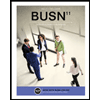
BUSN 11 Introduction to Business Student Edition
Business
ISBN:9781337407137
Author:Kelly
Publisher:Cengage Learning
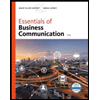
Essentials of Business Communication (MindTap Cou...
Business
ISBN:9781337386494
Author:Mary Ellen Guffey, Dana Loewy
Publisher:Cengage Learning
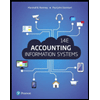
Accounting Information Systems (14th Edition)
Business
ISBN:9780134474021
Author:Marshall B. Romney, Paul J. Steinbart
Publisher:PEARSON

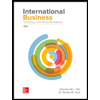
International Business: Competing in the Global M...
Business
ISBN:9781259929441
Author:Charles W. L. Hill Dr, G. Tomas M. Hult
Publisher:McGraw-Hill Education
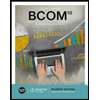
Related Questions
- on 1- Question 111 of 120 120 Revieting A Questions arisan A mortgage loan originator (MLO) who is also a real estate broker and refers a customer to a settlement services provider owned by their real estate brokerage must identify this relationship to a borrower on which c the following disclosures? АО Initial loan estimate B Special information booklet CO Third-party service providers DO Affiliated business arrangement 0:19:42arrow_forwardSituation 2: The Acme Warehouse Company received a consignment of 20ft lengths of 3in diameter stainless steel pipes. Acme had never handled pipe as part of their warehousing operation. The forklift truck operator assigned to this job used the truck's forks as a ram to load, handle, and unload the pipe. Inspection of the pipe by the owners revealed that the forks were bending and damaging the pipe. Question/s: Suggest several alternative methods for eliminating the problem of pipe damage. From a cost and ease in application standpoint, select one alternative solution for adoption.arrow_forwardInstruction: Prepare a check sheet to analyze the data below from customer complaints, then prepare a list of recommendations that will address these complaints. Case: Tip Top Markets Tip Top Markets is a regional chain of supermarkets located in the southeastern United States. Karen Martin, manager of one of the stores, was disturbed by the large number of complaints from customers at her store, particularly on Tuesdays, so she obtained complaint records from the store’s customer service desk for the last nine Tuesdays. June 1 out of orange yogurt produce not fresh bread stale lemon yogurt past sell date checkout lines too long couldn’t find rice overcharged milk past sell date double charged stock clerk rude meat smelled strange cashier not friendly charged for item not purchased out of maple walnut ice cream couldn’t find the sponges something green in meat meat tasted strange didn’t like music store too cold…arrow_forward
- Explain : Which of the following poses a challenge to hazard management? Question 17 options: a) cost cutting strategies b) worker reports of concerns c) employee retention d) preventive maintenance programs e) none of the abovearrow_forwardQuestion-1: A company supplies several types of Ice-cream to consumer market. It has two plants. The data of year 2022 for both plants are given as follows Plant-1 $10,000 $5,000 $2,000 50000 Quality rate 90% Average Selling price $5/unit Labor cost Material cost Energy cost Unit produced Plant-2 $7,000 $7,000 $3,000 40000 95% $7/unit For year-2023, company decided to make an additional investment of $3,000 which would potentially improve the quality rate by 4% in plant-1 and 2% in plant-2. For budget limitation they can only invest in any one of the plants. Management decided to invest where multifactor productivity improvement will be higher compared to year-2022. Perform your analysis and suggest where management should invest the amount. (You may use MS Excel to perform the calculation.)arrow_forwardSanjeevini is a 100 bed hospital established 10 years ago and is performing well. Now the hospital is facing trouble in sourcing inpatients due to various reasons, one of them being improper inpatient nursing care. So the hospital management plans to intervene to improve the inpatient Care Experience. QUESTION: Develop a questionnaire to study the patient satisfaction in the hospitaarrow_forward
- Instruction: Prepare a check sheet to analyze the data below from customer complaints, then prepare a list of recommendations that will address these complaints. Case: Tip Top Markets Tip Top Markets is a regional chain of supermarkets located in the southeastern United States. Karen Martin, manager of one of the stores, was disturbed by the large number of complaints from customers at her store, particularly on Tuesdays, so she obtained complaint records from the store’s customer service desk for the last nine Tuesdays.arrow_forwardVolumetric Glassware: Utility and Calibration (Dry Lab) Table B1: Calculation of a 100-mL Volumetric Flask. temperature of the Distilled H2O (°C) 27 density of distilled H2O at calibration temperature mass (g) of volumetric flask + distilled H₂O Trial 1 198.5893 Trial 2 198.6114 Trial 3 mass (g) of dry volumetric flask 98.6563 98.7503 198.6001 98.7145 mass (g) of distilled H₂O m true g calculated volume of water dispensed, cm³ corrected volume, V20 °c, cm³ average corrected volume, V20 °C, cm³ standard deviation (4 sig figs) %RSD (2 sig figs)arrow_forwardQUESTION 5 The Taguchi method includes three major concepts. It includes all of the following, except a. Employee involvement b. Quality loss function c. Quality robustness d. Target oriented qualityarrow_forward
- QUESTION 2 In an effort to reduce energy costs, a major university has installed more efficient lights as well as automatic sensors that turn the lights off when no movement is present in a room. Historically, the cost of lighting an average classroom for 1 week has been $265. To determine whether the changes have signficantly reduced costs, the university takes a sample of 50 classrooms. They find that the average cost for 1 week is $247 with a standard deviation of $60. When testing the hypothesis (at the 5% level of significance) that the average energy use has decreased from the past, what is the test statistic? (please round your answer to 2 decimal places)arrow_forwardQUESTION 1: CASE STUDY ON AMAZON: ONLINE SALES Amazon sells books, music, and many other items over the Internet and is one of the pioneers of online consumer sales. Amazon, based in Seattle, Washington, started by filling all orders using books purchased from a distributor in response to customer orders. As it grew, the company added warehouses, allowing it to react more quickly to customer orders. In 2009, Amazon had about 20 warehouses in the United States and another 30 in the rest of the world. It uses the U.S. Postal Service and other package carriers such as UPS and FedEx to send products to customers. Outbound shipping-related costs at Amazon in 2009 were almost $2 billion. With the Kindle, Amazon has worked hard to increase sales of digital books. As of 2009, Amazon offered more than 460,000 books in digital form. The company has also added a significant amount of audio and video content for sale in digital form. Amazon has continued to expand the set of products that it…arrow_forwardA number of fast-food chains, after their success with offering their customers fresh salads, and in an effort to downplay the image of selling unhealthy foods, began adding fresh fruit plates to their menus. At about some time, and seemingly in direct conflict with this “healthy” strategy, several other fast-food chains began offering fat- and calorie-laden items to their menus. a. Compare these two widely different approaches (first approach, fresh fruit plates; second approach, fat- and calorie-laden items), and predict the chances of each one’s success. Consider several factors such as price, customer preferences, etc. b. Name some other products that are popular, despite known health risks. (e.g., soda, alcohol)arrow_forward
arrow_back_ios
SEE MORE QUESTIONS
arrow_forward_ios
Recommended textbooks for you
 BUSN 11 Introduction to Business Student EditionBusinessISBN:9781337407137Author:KellyPublisher:Cengage Learning
BUSN 11 Introduction to Business Student EditionBusinessISBN:9781337407137Author:KellyPublisher:Cengage Learning Essentials of Business Communication (MindTap Cou...BusinessISBN:9781337386494Author:Mary Ellen Guffey, Dana LoewyPublisher:Cengage Learning
Essentials of Business Communication (MindTap Cou...BusinessISBN:9781337386494Author:Mary Ellen Guffey, Dana LoewyPublisher:Cengage Learning Accounting Information Systems (14th Edition)BusinessISBN:9780134474021Author:Marshall B. Romney, Paul J. SteinbartPublisher:PEARSON
Accounting Information Systems (14th Edition)BusinessISBN:9780134474021Author:Marshall B. Romney, Paul J. SteinbartPublisher:PEARSON
 International Business: Competing in the Global M...BusinessISBN:9781259929441Author:Charles W. L. Hill Dr, G. Tomas M. HultPublisher:McGraw-Hill Education
International Business: Competing in the Global M...BusinessISBN:9781259929441Author:Charles W. L. Hill Dr, G. Tomas M. HultPublisher:McGraw-Hill Education

BUSN 11 Introduction to Business Student Edition
Business
ISBN:9781337407137
Author:Kelly
Publisher:Cengage Learning

Essentials of Business Communication (MindTap Cou...
Business
ISBN:9781337386494
Author:Mary Ellen Guffey, Dana Loewy
Publisher:Cengage Learning

Accounting Information Systems (14th Edition)
Business
ISBN:9780134474021
Author:Marshall B. Romney, Paul J. Steinbart
Publisher:PEARSON


International Business: Competing in the Global M...
Business
ISBN:9781259929441
Author:Charles W. L. Hill Dr, G. Tomas M. Hult
Publisher:McGraw-Hill Education
